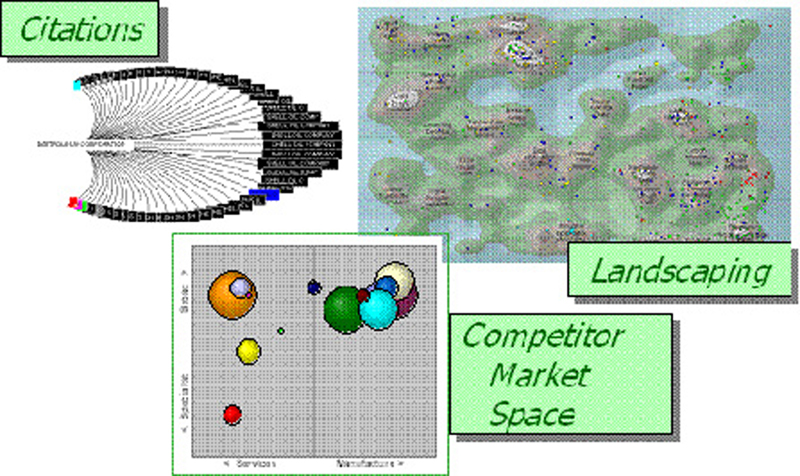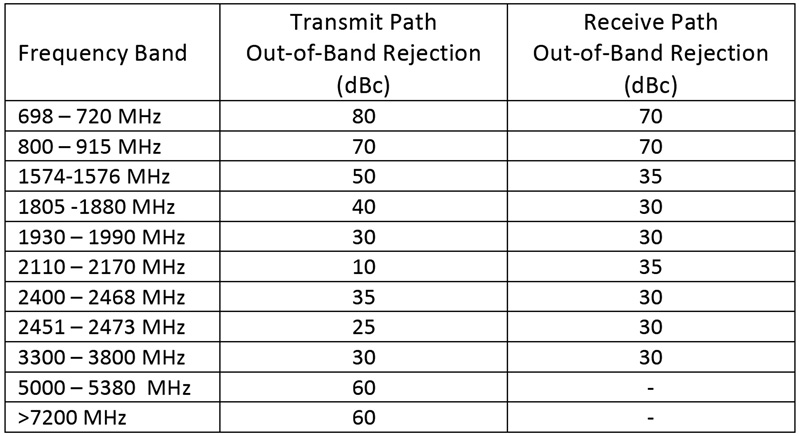Author:
Allen Chien, PhD Product Marketing Manager, Avago Technologies
Date
11/19/2011
Applications for portable wireless data communications have been booming in the last few years. For designers, these applications pose the challenge of designing multiple high-efficiency, low-noise RF channels in as small a space as possible. One approach to meet this challenge is to leverage integrated RF modules that can provide superior coexistence faster and more efficiently than use of discrete components. Wireless is becoming the preferred method for consumer and commercial data communications of all kinds. WiFi networks abound in the home, supporting such devices as PCs, tablets, smartphones, gaming systems, and even televisions. Public WiFi "hotspots" are also plentiful, used for web surfing, messaging, and creating femtocells for the off-load of cellular network IP traffic. There are also many other wireless data links in use beyond WiFi, including Bluetooth for remote headsets, ZigBee for home automation networks, WiMAX and LTE for wireless broadband, and cellular telephony. In addition, transportation and utility industries are working to employ many of these same network technologies for applications such as the smart power grid and traffic management. Similarly, other industries seek to employ wireless networks for machine-to-machine communications to automate various elements in production and commerce. This growing dependence on wireless data communications places a two-fold burden on equipment developers. First, their designs must provide extremely high quality transmit and receive channels. Transmit channels must meet strict power, spectral, and linearity standards, providing sharp bandwidth filtering while avoiding amplifier distortions and the reflections caused by impedance mismatches. Receive channels must be efficient to avoid signal loss and must eliminate as much noise as possible in order to maximize data rates while dealing with very low received signal strengths. While addressing these RF design challenges developers must also deal with the burden of channel coexistence. Many systems need not one but two or more wireless links, each corresponding to different standards. A laptop computer, for instance, might incorporate both WiFi and WiMAX connectivity in its design. A smartphone will include WiFi with Bluetooth as well as GSM, 3G, and LTE. Such portable systems also require the RF designs for the various channels to be as compact as possible and the different channels are typically interwoven on the circuit board. This physical and spectral proximity places stringent demands on receive filters. For example, a WiFi design may need to operate over a 2.4 - 2.5 GHz band while rejecting signals from a nearby 3G transmitter at 2.1 GHz. Such tight frequency spacing requires filters with extremely steep roll-offs. Integrated front-end modules (FEM) for RF coexistence can provide independent transmit and receive paths with in-line filters and amplifiers along with signal switches for sharing antenna connections. Utilizing an integrated module rather than pursuing a discrete-component design allows developers to significantly reduce their design effort and costs while creating highly precise and efficient RF subsystems. The modules save board space, as well, compared to discrete designs (Figure 1).

Integrated FEMs achieve these benefits through a number of key design features. First, the modules provide developers with a fully-designed and optimized configuration of layout and components. As an example, Avago Technologies carefully designs modules with matched 50? impedances and uniform phase delays on all signal paths. All active and discrete components in the modules are carefully matched and the design tuned to provide optimum operating characteristics along the entire RF path. Another key feature of integrated FEMs is that they bundle everything into a compact form factor (Figure 2). All of the critical design and layout tasks are already done, with no tuning or tweaking necessary. Designers only need to deal with a few connections to a single component when laying out the front end of their RF subsystem, greatly reducing design time. The integrated FEMs not only help eliminate the front-end RF design task, they help speed other development stages. Because the modules are fully assembled, optimized, and tested, for example, they eliminate the need for front-end design validation. Later in the development effort, these same characteristics reduce time and effort needed for regulatory and standards compliance testing of the finished design. All this reduction in development time equates directly to quicker time-to-market as well as lower development costs. The integrated FEMs also help lower production costs. The single FEM replaces numerous discrete components in the production bill of materials (BOM), reducing the cost of BOM management and inventory handling. Because the FEM is pre-tested, the design's RF section will also have a better production yield than products using discrete component designs.

The advantages that integrated FEMs bring to designs needing wireless coexistence can best be understood by examining a module's capabilities in detail. The Avago AFEM-S257 WiMAX coexistence FEM supports reception and transmission of 16 quadrature amplitude modulation (QAM) WiMAX in the presence of WiFi and other nearby RF channels, and offers dual receive channels to allow reception of two simultaneous signals or support RX diversity reception. It leverages Avago's proprietary film bulk acoustic resonance (FBAR) filters to achieve steep roll-off characteristics to provide high out-of-band rejection. The low insertion loss of FBAR filters ensures maximum receive signal strength and minimal waste of transmit power, helping maximize battery life in portable devices. The S257 module integrates a linear power transmit amplifier, low-noise receive amplifiers with pre-selector FBAR filters, band-pass filters, and RF switches with 50? impedance on all RF ports (Figure 3). The design is optimized for operation in the 2.5 to 2.7 GHz band of WiMAX with a supply voltage of 3 to 5VDC. All the amplifiers in the S257 module have exceptional tolerance to supply voltage and temperature variations because of the GaAs pHEMT process technology. The module's transmit amplifier has a selectable gain, allowing operation in low power mode to reduce the module's demand on a battery supply. In low power mode the amplifier delivers 0 dBm to the antenna output while the module typically draws 95 mA from a 3.6V supply. The amplifier has a 23 dB gain step, so in high power mode the amplifier produces 24 dBm while the module typically draws 420 mA. The transmit amplifier's total gain is 34 dB in high -power mode.

Typical gain flatness for the transmit amplifier is 1 dB over any 10 MHz band, with a gain variation of no more than 1 dB over the full supply voltage range. This allows the transmit channel to fully meet WiMAX QAM mask specifications with a typical error vector magnitude (EVM) of -34 dB (2.5%) in high power mode. The low-noise amplifiers in the module's receive pathways provide a gain of 15 dB, typically producing 10 dB of overall gain from antenna input to receive path output. In the presence of strong input signals the receive amplifier can be bypassed, reducing current draw from 10 mA to 0.25 ?A per receiver. Even with the amplifier engaged, the module exhibits a maximum 3.5 dB noise figure between an antenna input and its receive channel's output. In support of multi-channel coexistence the switches and filters provide substantial isolation between the various signal pathways and operating frequency bands. Isolation between the two receive channels as well as either receive channel and the transmit channel is 25 dB to prevent cross coupling of signal pathways. The FBAR band-pass filters provide substantial out-of-band rejection on both transmit and receive pathways (Table 1), with at least 35dB of rejection relative to carrier at the WiFi ISM band for the receive channel. This entire RF front end is packed into a space-saving 5x7x1 mm sealed package, representing at least a 25% savings in board space relative to a discrete component design. Transmit and receive ports are arranged on one side of the module with antenna connections on the opposite side for convenient signal routing, with ground pads between signal lines for isolation. Creating an effective front-end for designs requiring coexistence of multiple RF channels at nearby frequencies represents a significant challenge, even for the most experienced RF design engineers. For developers creating today's multi-radio mobile devices, integrated FEMs such as the Avago AFEM-S257 are an opportunity to side-step those design challenges. By utilizing an integrated FEM, developers can bring their devices to market quicker at less expense while obtaining a highly compact design with state of the art performance. www.avagotech.com